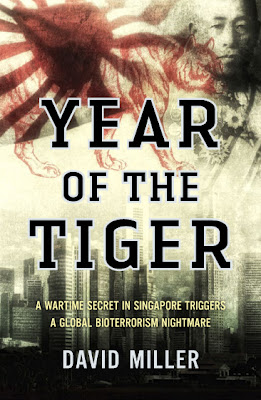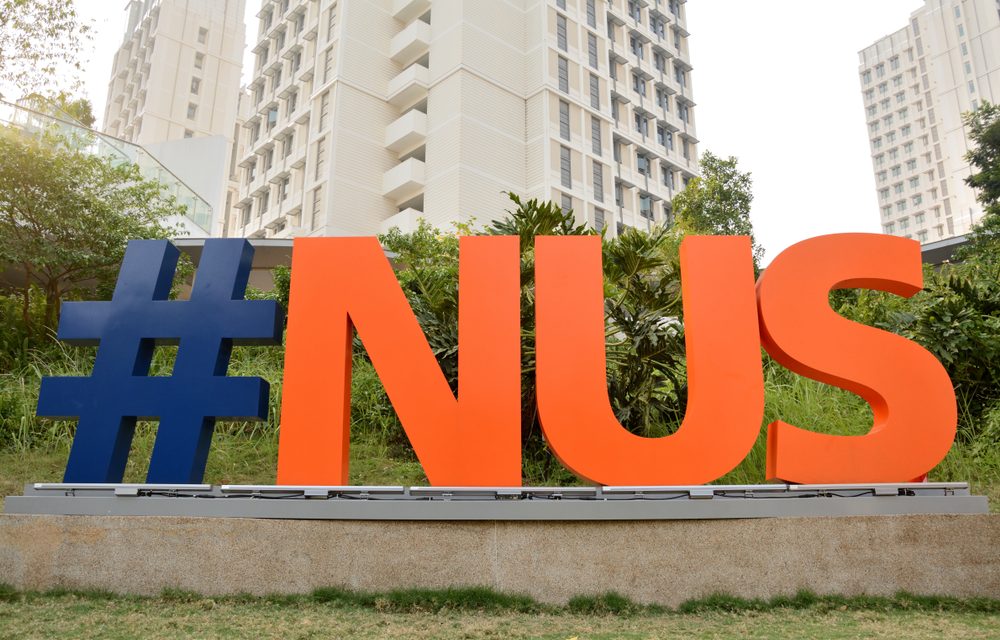
David Miller is a former Straits Times journalist and I got to knew him while he was working in corporate communications after he had left Singapore Press Holdings.
He had spent ten years with the Straits Times crime desk and as a correspondent, he wrote a number of articles about the discovery of World War II tunnels on the Singapore mainland.
Year of the Tiger, inspired in part by the mystery surrounding long-forgotten war relics in Singapore, is his first novel.
The book was released last year in August and had remained on the top 10 International Bestsellers List at Kinokuniya Singapore between December 31, 2012 and August 1, 2013. Not bad for a Singapore book.
The book follows the spirit of Dan Brown‘s worldwide hit, The Da Vinci Code, and is a mixed of facts and fictions, spun into a mystery narrative.
Book Synopsis:
During the World War II, the Imperial Japanese Army under General Tomoyuki Yamashita looted untold amounts of gold and other valuables from across its occupied colonies in Southeast Asia to finance the empire’s ongoing military expansion. But when the tide of war turned against Japan in 1943, much of this treasure had to be buried in secret. Over the decades, the search for the legendary Yamshita’s Gold had been in vain, until now…
A group of foreign workers digging a tunnel under the Padang in present-day Singapore stumbles across a treasure vault and inadvertently triggers a biological booby trap. An unknown strain of anthrax is released threatening a global holocaust. It is up to Assistant Superintendent Gerald Loh of the Singapore Police Force to decipher a cryptic clue left behind with the loot to halt this deadly plague.
Year of the Tiger takes readers on a roller-coaster journey of political wrangling, murky history and secret organistions to discover the elusive cure for a seemingly unstoppable pandemic.
I like the idea and concept behind the book. Taking a narrative spin on Yamashita’s Gold is clever as the topic has always garnered keen historical interest globally. The very existence of the treasures remain debatable and is bound to get people excited to hunt it down in real life. This will help the book reach out to an international audience instead of limiting to just Singapore readers.
With his journalistic background, David’s writing is clear and concise. Reading the book felt like reading an extended newspaper report, giving it a sense of realism that makes the story extremely believable. So much so that I find myself googling on many items in the book to find out if they were fact or fiction!
To move the story along on a broader narrative on War World II history, conspiracy theories and world crisis, less in-depth characterisation was afforded on the protagonists in the book.
Overall, the book was an enjoyable read for me. I would recommend it to history buffs, conspiracy theorists and general readers who are interested to find out more about the Japanese Occupation in Singapore.
The book is available for sale in leading bookstores as well as online via various online stores.



![[Review] Be Our Guest to a Night of Enchantment with Disney’s Beauty and the Beast in Singapore This December [Review] Be Our Guest to a Night of Enchantment with Disney’s Beauty and the Beast in Singapore This December - Alvinology](https://media.alvinology.com/uploads/2025/12/Screenshot-2025-12-14-195843-110x110.png)

![[Review] Tim Ho Wan’s Limited Edition East-Meets-West Menu Brings Festive Flavours to Dim Sum [Review] Tim Ho Wan’s Limited Edition East-Meets-West Menu Brings Festive Flavours to Dim Sum - Alvinology](https://media.alvinology.com/uploads/2025/12/6194907278834600928-110x110.jpg)
![[Book Review] Year of the Tiger by David Miller [Book Review] Year of the Tiger by David Miller - Alvinology](https://alvinology.com/wp-content/uploads/2014/03/9478394461_61ca166927_o.jpg)





